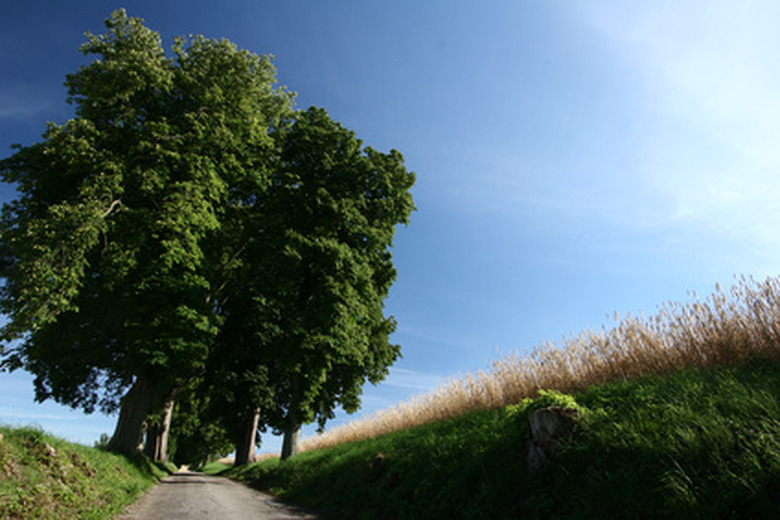Facts About Denmark's Native Plants
The landscape of Denmark is primarily agricultural, characterized by forests, pastures and meadows and a highly diversified coastline that features sandy, white beaches, marshes and dunes. Travelers may be interested to learn that in addition to seeing Denmark's native plants, they are also visiting what several surveys claim is the country with the happiest people on earth.
National Flower
Denmark's national flower is rødkløver or the red clover (Trifolium pratense). Its other common names include cow clover, meadow clover and wild clover. Red clover contains estrogenlike compounds. It has herbal and medicinal uses in tablets, capsules and teas.
In The Wild
Several species of wild orchids grow north of Copenhagen in an area called Gentofte Municipality. This area comprises different habitats, including lake edges, wet sunny meadows and marshy spots. Among the wild orchid species that are native to these habitats are the common spotted orchid (Dactylorhiza maculata ssp. fuchsii) and the northern marsh orchid (Dactylorhiza purpurella). Both species feature purple flowers with a pattern of spots. Another orchid species called early coralwood (Corallorhiza trifida) exhibits yellow to green flowers.
- The landscape of Denmark is primarily agricultural, characterized by forests, pastures and meadows and a highly diversified coastline that features sandy, white beaches, marshes and dunes.
- Several species of wild orchids grow north of Copenhagen in an area called Gentofte Municipality.
Evergreen Fairytale
"Why the Evergreen Trees Keep their Leaves in Winter" is a Danish fairytale that is also an introduction to its trees. The story revolves around a little bird with a broken wing, who approaches the birch, the oak and the willow for shelter. They all turn it away. However, the spruce gives the bird shelter in its warm branches, the nearby pine protects it from the wind and the juniper supplies berries for its food.
Ancient Trees
The stately, native trees of Denmark do not exist in fairytales alone. There are ancient trees at sites that were once royal hunting forests and wood pastures. For example, Jaegersborg Dyrehaven park in Copenhagen is home to ancient oak trees such as the Ulvedolseg (Ulvedols Oak). The park also features ancient alders, beeches (Denmark's national tree), field maples and patches of hawthorn scrub. The Danish National Forest and Nature Agency manages the park. Another important area for Denmark's ancient trees is Sundby Storskov that includes the polypore oak–Piptoporus quercinus.
- "Why the Evergreen Trees Keep their Leaves in Winter" is a Danish fairytale that is also an introduction to its trees.
- The park also features ancient alders, beeches (Denmark's national tree), field maples and patches of hawthorn scrub.
Botanical Garden and Museum
The Natural History Museum of Denmark in Copenhagen includes The Botanic Garden and Museum. The garden exhibits the largest collection of living plants in Denmark, providing rich resources for those interested in learning more about Denmark's native plants. The Museum houses the Herbarium of Danish Vascular Plants, the largest collection of Danish plants, dating back to the 18th century. There are about 246,000 plants representing around 1,500 species.
